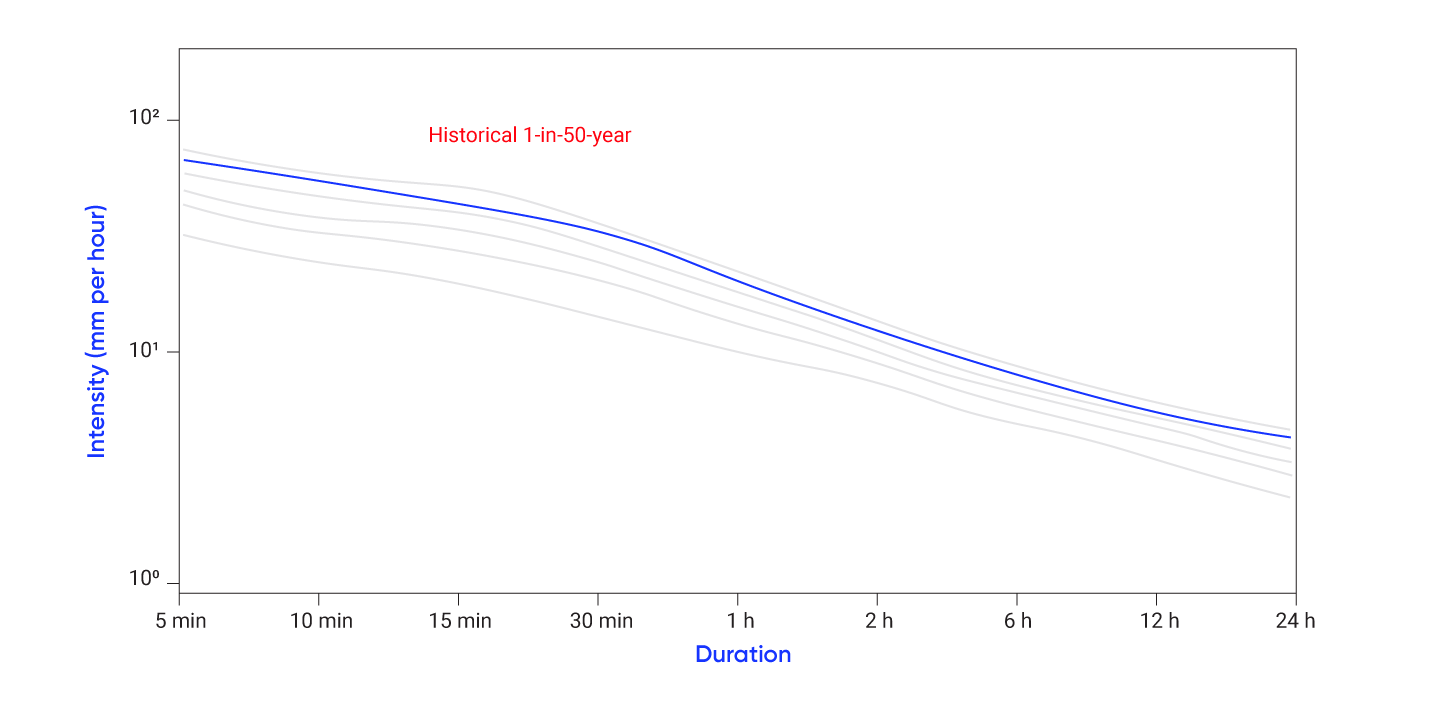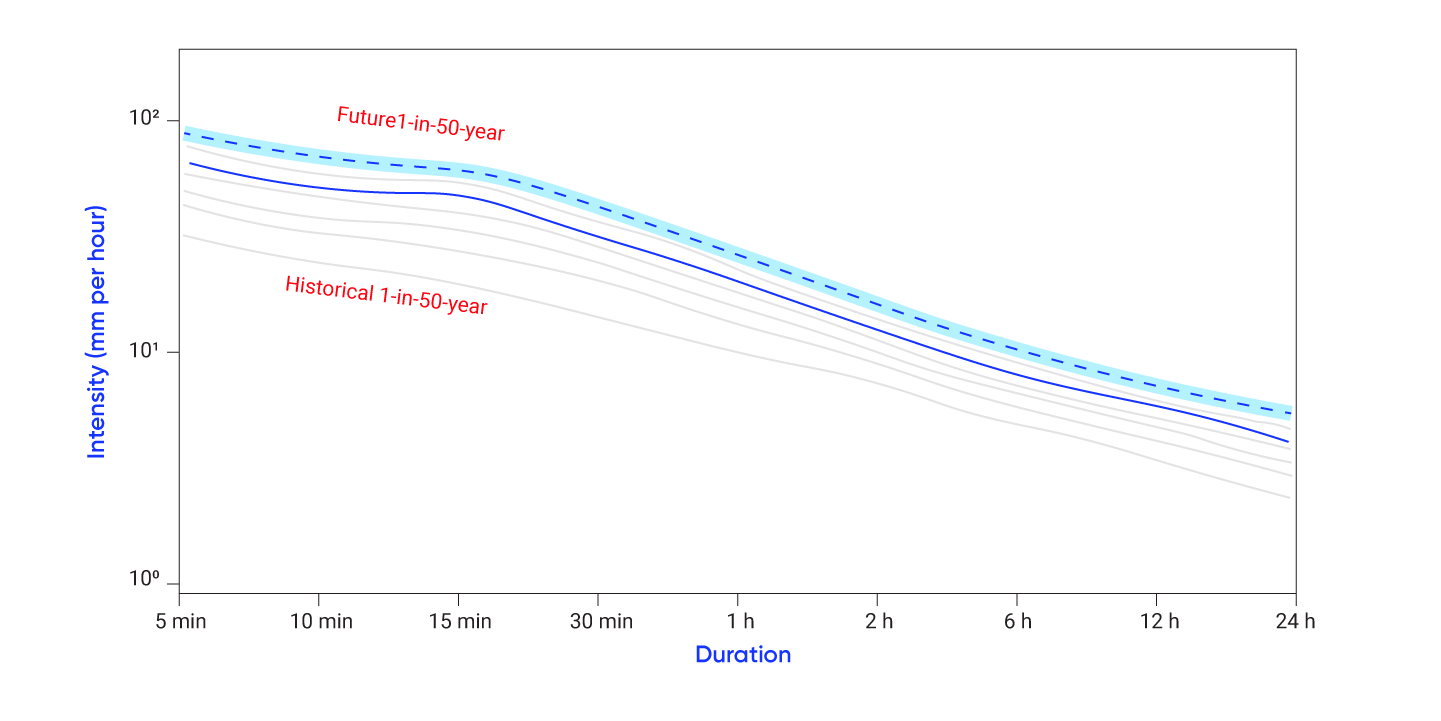However, a relationship between warming temperatures and precipitation extremes provides an alternate means for adjusting historical IDF curves. This ‘temperature scaling’ method is being increasingly used to estimate future Canadian rainfall extremes. It is described in CSA PLUS 4013 and is being used to develop future rainfall estimates for the National Building Code of Canada and Canadian Highway Bridge Design Code.
Temperature scaling provides a simple way to update IDF curves for climate change. However, careful consideration of uncertainties in estimates of future extreme rainfall is still required. Local temperature change projections depend on future emissions, climate model choices, and natural variability. And the historical IDF data that underlie any future IDF estimates may themselves be less than ideal estimates of past rainfall extremes.
For these reasons, the climate change-scaled IDF data provided on ClimateData.ca was developed using an ensemble of climate models. The datasets include multiple emissions scenarios, time periods, percentiles, and confidence intervals. Details on the scaling methodology and a worked example are provided below.




